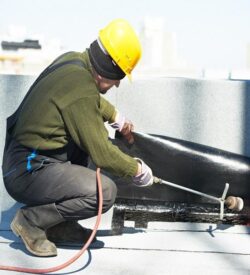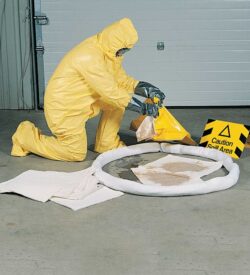TRAFFIC CONTROL PERSON TRAINING
The Traffic Control Person Training course from Safety First Training is an OHSA based program and is compliant with the Ontario Ministry of Transportation Book 7 Temporary Conditions: Ontario Traffic Manual 2022 edition TCP requirement. This Traffic Control Person Training program instructs participants how to safely perform their duties and responsibilities in temporary traffic environments. Training is offered around Southern Ontario including Toronto, Mississauga, Brampton, Markham, Oakville, Burlington, Hamilton, Niagara, Kitchener, Waterloo, Cambridge. We also offer a Train the Trainer course for Traffic Control Person Training.
Note – we do not provide public sessions for individuals
Want to take the Traffic Control Person ONLINE course instead?
View Online CourseDescription
Outline – Traffic Control Person Training
Course Introduction
Related Government Legislation
Roles and responsibilities of workers and supervisors
Job preparation
Traffic protection plan
Stop and Slow signs and hand signals
Traffic Control Person authority
Communication requirements
Positioning
Personal protective equipment
Prevention and control methods
Traffic Control Person Training Safety Video
Traffic Control Person (TCP) training is important in Ontario for several reasons. Firstly, TCPs play a critical role in ensuring the safety of road workers, motorists, pedestrians, and cyclists in work zones. TCPs are responsible for directing traffic flow, maintaining safe distances between vehicles, and ensuring that drivers adhere to posted speed limits and traffic control devices. Without proper training, TCPs may not be equipped to manage the risks associated with these responsibilities, leading to potential accidents and injuries.
Secondly, in Ontario, employers have a legal obligation to provide their workers with adequate training and equipment to ensure their safety on the job. TCP training is mandated under the Occupational Health and Safety Act and is required by the Ministry of Transportation. Failure to provide proper training can result in fines and legal penalties for employers.
Thirdly, the demand for TCPs in Ontario is high due to ongoing road construction projects and maintenance activities. The need for qualified TCPs has increased, and employers require trained personnel to meet their business requirements. Having TCP certification is becoming a prerequisite for many job openings in the construction and infrastructure industry.
Finally, TCP training provides individuals with valuable skills and knowledge that can help them advance their careers. By completing TCP training, individuals can increase their employment opportunities and earn higher wages. Furthermore, TCP training provides transferable skills that can be applied to other occupations, such as public safety or event management.
In summary, TCP training is essential in Ontario for ensuring the safety of road workers and motorists, meeting legal obligations, addressing workforce demands, and promoting career development.
Train the Trainer – Traffic Control Person
Our professional Train the Trainer certification course for Traffic Control Person allow our clients to learn how to teach OHSA based courses directly to their employees. When individuals or groups of employees need safety training, these train the trainer programs can be more cost effective than hiring outside training companies. We will train you to be an effective Traffic Control Person safety trainer for your company.
Our Train the Trainer Course Package include:
- Professional Teaching Guide
- Participant Course Handout
- Evaluation Forms
- Wall Certificate template
- Instructor Course Presentation
- Course Test and Answer Key
- Course Video Supplement
- Wallet Card template
10 Safety Tips for Temporary Traffic Conditions
1. Plan
There must be a worksite management plan. It should consist of a temporary traffic control plan that protects workers by safely moving traffic around or through the work zone. There must also be a traffic control plan for inside the work zone that manages the flow of heavy equipment, construction vehicles and workers.
2. Traffic Control
The work zone must have an advanced warning area with warning signs alerting motorists of upcoming changes in driving conditions, a transition area using traffic control devices for lane closures and traffic pattern shifts, a buffer area, the work area and a termination area to allow traffic to resume back to normal and a proper sign indicating that the work zone has ended.
All traffic control devices (cones, barrels, barriers, signs) must conform to the Ontario Ministry of Transportation traffic requirements.
3. Separate Work Areas
Road construction work zones usually have several dangerous activities taking place at the same time. To avoid accidents, use cones, barrels, and barriers to clearly identify specific areas of the work zone such as material storage, areas where heavy equipment is being used, vehicle traffic, vehicle parking and safe areas for workers on foot to move around in.
4. Personal Protective Equipment (PPE)
Proper Personal protective equipment (PPE) including hard hats, steel-toed boots, highly visible clothing and depending on the noise levels, hearing protection.
All PPE should meet or exceed CSA standards. All highly visible clothing whether it’s a vest, jacket or shirt should be bright fluorescent orange or lime/yellow and have visible reflective material especially if working at night and should meet CSA/ANSI Class 2 or 3 standards.
5. Your Surroundings
You should always be aware of what’s going on around you, regardless of what your job duties entail in the work zone. Always avoid walking behind any vehicle that may be backing up or into the swing radius of heavy equipment.
If possible, face traffic while inside the work zone or have a spotter available when your back is turned. Spotters must also be used to monitor the movement of vehicles and heavy equipment inside the work zone in addition to monitoring traffic to alert workers to any potential dangers.
6. Equipment Blind Spots
Equipment operators must ensure that all mirrors and visual aid devices are attached and operating properly including backup alarms and lights.
If you are on foot and working near these machines while in operation remember that the driver has a limited line of sight. Always stay in visual contact with the driver. A good rule of thumb to follow is that if you can’t see them then they probably don’t see you.
7. Competent Person
A competent person must be onsite whenever work is being performed and is needed to conduct hazard assessments and regular inspections of the worksite. A competent person is also needed to select the appropriate class of PPE to be used by workers and to approve the appropriate types of traffic control devices. Workers should report any unsafe hazards or equipment to the competent person assigned to the work zone for immediate correction.
8. Daily Safety Meeting
After confirming all jobsite workers have the proper training and required PPE, there must be a daily safety meeting before work begins. Because conditions can change significantly from day to day in the work zone, workers should be briefed on the work activity and be notified of all potential hazards.
9. Site Specific Safety
A site specific safety program that is designed specifically for the job site will minimize the chance of accidents happening. Each road construction project is unique and each work zone within the project has its own unique hazards and challenges. A site specific safety program identifies all hazards with plans to control, reduce or eliminate them, schedules are established to inspect all equipment and material, a plan for first aid and emergency medical care in the event of an accident and safety training (Traffic Control Person Training) schedules for all employees.
10. Stay Hydrated
Anyone working outside is susceptible to heat stress and heat-related illnesses. Asphalt absorbs 95% of the sun’s rays and asphalt temperatures can be significantly higher than the surrounding air temperature. Workers must drink plenty of water and also get out of the heat and sun as much as possible especially on extremely hot days to avoid heatstroke, dehydration and heat exhaustion.
Click here for Traffic Control Person Training safety video.
Click here for Traffic Control Person Training Online Course.
Duration:
Up to 8 hours depending on participants’ experience levels
Assessment:
A passing grade of 75% is required in order to receive a certificate
Completion:
Upon successful completion of this course, participants will receive a PDF wall certificate and PDF wallet card for their records
Contact us today to learn more about the course and the topics covered.




